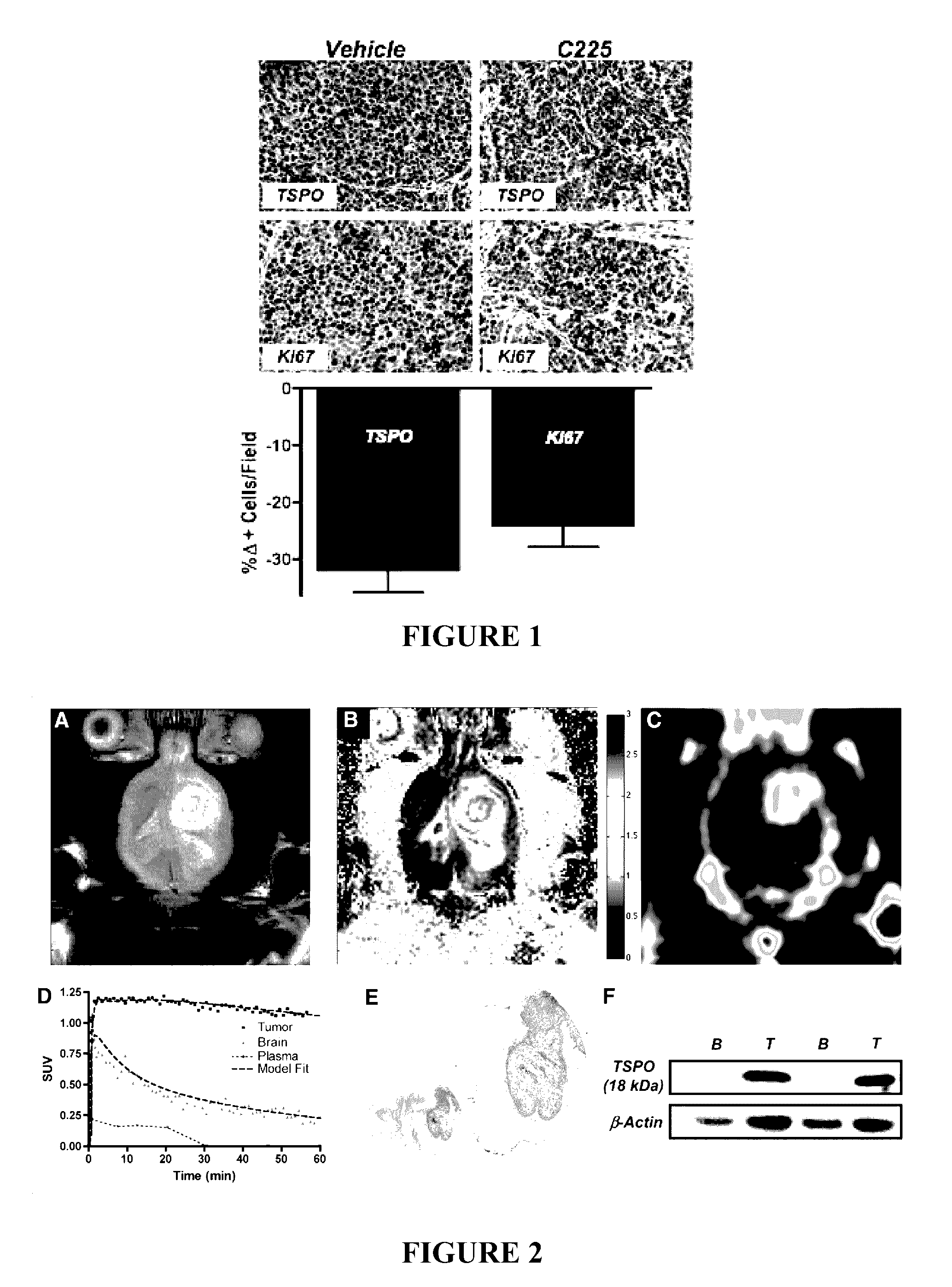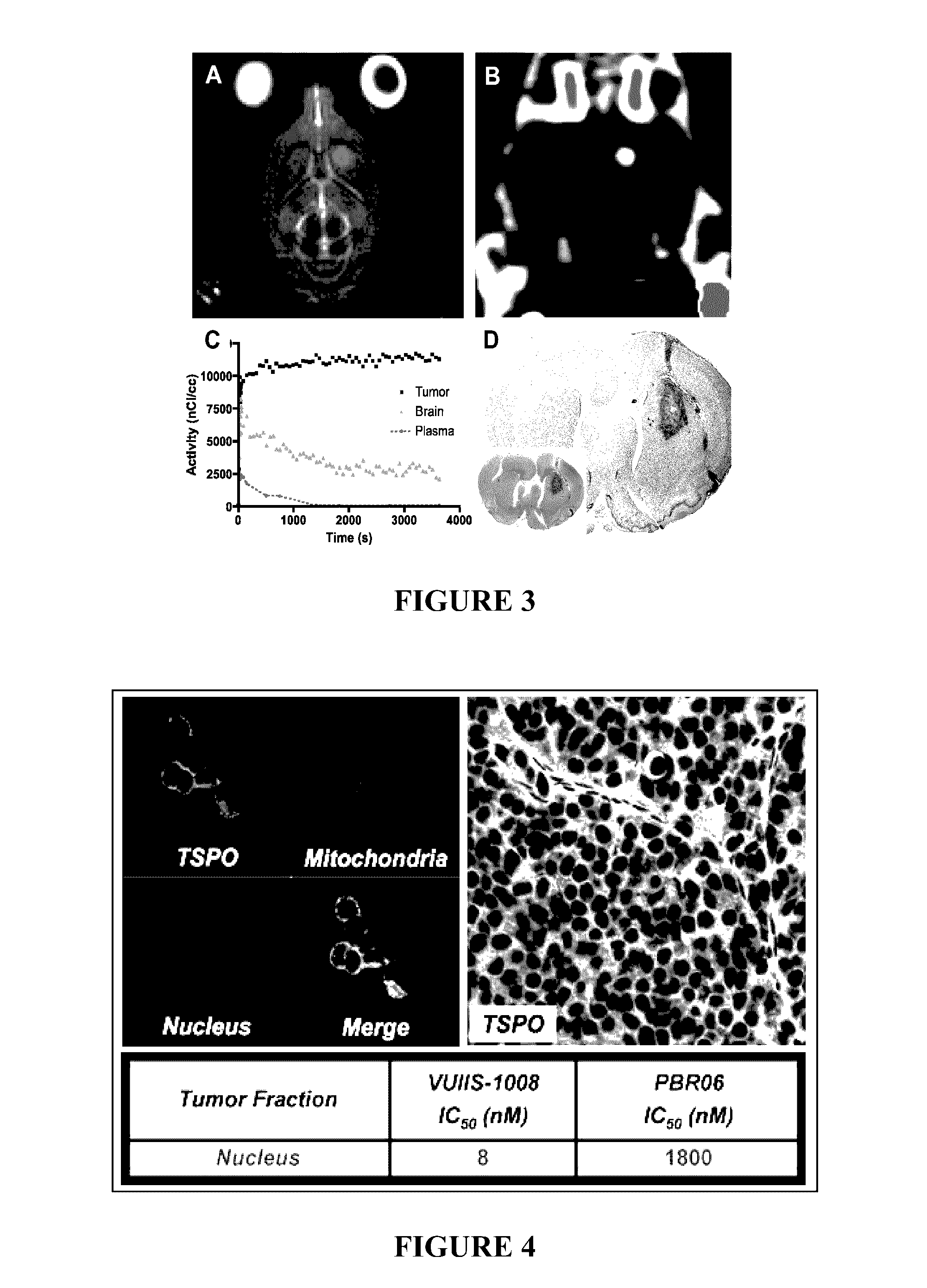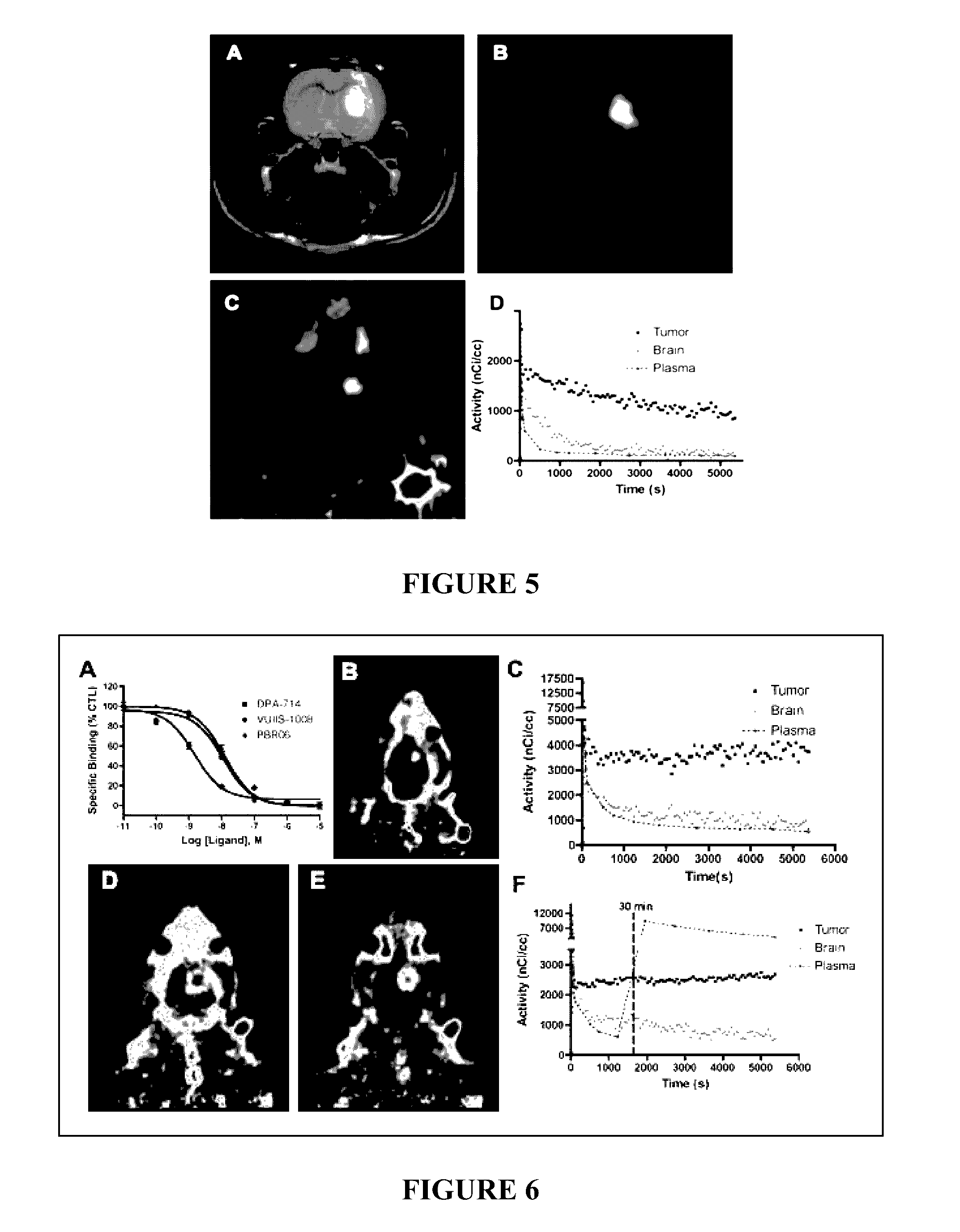TSPO ligands for cancer imaging and treatment
a technology of positron emission tomography and tumor imaging, which is applied in the field of translocator protein (tspo) positron emission tomography (pet) imaging ligands, can solve the problems of limited diversity of biological questions addressed by pet, serial tumor biopsies, and inability to assess treatment response longitudinally, so as to accelerate the development of pet imaging probes. the effect of accelerating the pace of the pace of developmen
- Summary
- Abstract
- Description
- Claims
- Application Information
AI Technical Summary
Benefits of technology
Problems solved by technology
Method used
Image
Examples
example 1a
[0251]This example demonstrates an example of a synthesis of a library of the present invention. In this example, the inventors employ Biotage Initiator 60 microwave system equipped with robotic sample manipulator to synthesize compounds.
[0252]Previous structure-activity studies show that substitution on the pyrimidine ring is an important determinant for the TSPO selectivity over the CBR and is important for developing high binding and highly selective compounds. Therefore, synthetic activities of this example focus on this portion of the molecule and will extend to additional potentially lipophilic pockets thought assist with TSPO binding. See below:
[0253]
[0254]Generally, all of the analogues of this example can be synthesized in three steps, each utilizing MAOS. Our overall library-based approach emphasizes the introduction of chemical diversity applied at each of the three steps. As shown in Table 1, various starting materials utilized in the first step are greatly complemented ...
example 1b
[0258]This example demonstrates synthesizing precursor / cold analogue pairs of the present invention. Ligands with high binding affinity will be chosen as lead for following probe discovery. Corresponding precursor and cold analogue can produced with suitable modification on these ligands. For example, in order to insert 18F in to the DPA-714 scaffold, a precursor 8 with a tosyl group need to be prepared in advance (Scheme 2). With this precursor, further radiosynthesis can be performed to form [18F]DPA-714.
[0259]
example 1c
[0260]The tables below present further examples of the general synthetic methods used in route to novel aryloxyanilides. We will employ the methodology of Okubo et al. (Okubo, T., Yoshikawa, R., Chaki, S., Okuyama, S., Nakazato, A. “Design, synthesis and structure-affinity relationships of aryloxyanilide derivatives as novel peripheral benzodiazepine receptor ligands.” Bioorganic Medicinal Chemistry 2004, 12(2), 423) with minor adaptations such as implementation of MAOS and solid-phase reagents. Synthesis of the proposed aryloxyanilides can be simplified into three primary steps: synthesis of the substituted aryloxyaniline (first table, below); reductive amination with the corresponding aldehyde; acylation with an acid halide (second table, below). We have applied these methodologies towards high-throughput synthesis of novel aryloxyanilides, as well as the synthesis of PBR06. The use of commercially available substituted 2-phenoxyanilines and aldehydes may be used, or noncommercial...
PUM
| Property | Measurement | Unit |
|---|---|---|
| Capacitance | aaaaa | aaaaa |
| Pharmaceutically acceptable | aaaaa | aaaaa |
| Cell proliferation rate | aaaaa | aaaaa |
Abstract
Description
Claims
Application Information
 Login to View More
Login to View More - R&D
- Intellectual Property
- Life Sciences
- Materials
- Tech Scout
- Unparalleled Data Quality
- Higher Quality Content
- 60% Fewer Hallucinations
Browse by: Latest US Patents, China's latest patents, Technical Efficacy Thesaurus, Application Domain, Technology Topic, Popular Technical Reports.
© 2025 PatSnap. All rights reserved.Legal|Privacy policy|Modern Slavery Act Transparency Statement|Sitemap|About US| Contact US: help@patsnap.com



